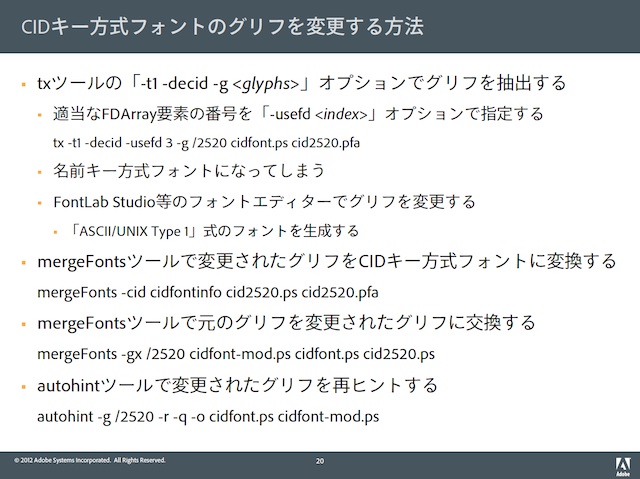Yesterday—meaning Wednesday, October 10th, 2012, Hong Kong Time (UTC+8)—I had the honor and privilege to present the first two hours of a three-hour ATypI Hong Kong 2012 workshop entitled Manipulating CID-Keyed Fonts Using AFDKO Tools. When I did a rough count, there were nearly 30 people in attendance. I’d like to use this opportunity to thank those who were able to attend, which meant that they made the effort to travel to this conference, and also chose to attend this workshop in lieu of attending presentations from the Typography & Reading and Typography & Culture tracks, or other concurrent workshops. I’d also like to provide to those who attended, and to those who were not able to attend, the presentation that I used to drive these two hours, which includes material that can be studied and referenced.
In addition to installing the latest-and-greatest version of AFDKO, the workshop attendees were also provide with the actual sample font data that I used to demonstrate the various workflows and techniques.
My hope is that these materials are useful to those who attended this workshop, and to those who were not able to do so. Enjoy!
Speaking of enjoy, that is what I plan to do for the remaining four days of this five-day conference. ☺


